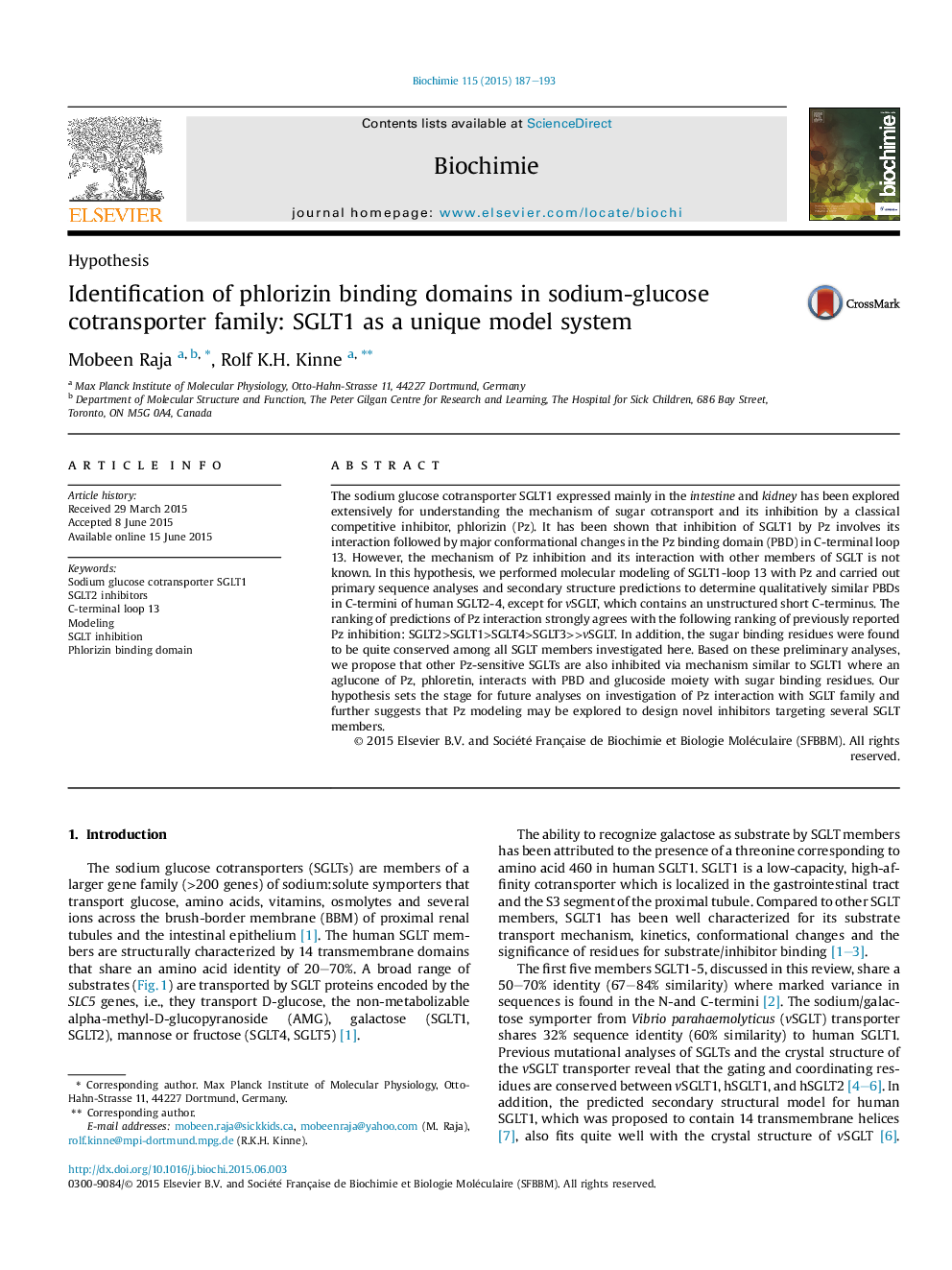| Article ID | Journal | Published Year | Pages | File Type |
|---|---|---|---|---|
| 1952050 | Biochimie | 2015 | 7 Pages |
•SGLT1 acts as a model system in understanding Pz inhibition in SGLT family.•Pz binding involves two major binding sites, an aglucone and a glucoside binding pocket.•Like SGLT1, SGLT2-4 also exhibit similar Pz binding domains.•The degree of Pz interaction/inhibition depends on hydrophobicity of loop 13.•Pz modeling allows designing of novel drugs targeting other SGLTs.
The sodium glucose cotransporter SGLT1 expressed mainly in the intestine and kidney has been explored extensively for understanding the mechanism of sugar cotransport and its inhibition by a classical competitive inhibitor, phlorizin (Pz). It has been shown that inhibition of SGLT1 by Pz involves its interaction followed by major conformational changes in the Pz binding domain (PBD) in C-terminal loop 13. However, the mechanism of Pz inhibition and its interaction with other members of SGLT is not known. In this hypothesis, we performed molecular modeling of SGLT1-loop 13 with Pz and carried out primary sequence analyses and secondary structure predictions to determine qualitatively similar PBDs in C-termini of human SGLT2-4, except for vSGLT, which contains an unstructured short C-terminus. The ranking of predictions of Pz interaction strongly agrees with the following ranking of previously reported Pz inhibition: SGLT2>SGLT1>SGLT4>SGLT3>>vSGLT. In addition, the sugar binding residues were found to be quite conserved among all SGLT members investigated here. Based on these preliminary analyses, we propose that other Pz-sensitive SGLTs are also inhibited via mechanism similar to SGLT1 where an aglucone of Pz, phloretin, interacts with PBD and glucoside moiety with sugar binding residues. Our hypothesis sets the stage for future analyses on investigation of Pz interaction with SGLT family and further suggests that Pz modeling may be explored to design novel inhibitors targeting several SGLT members.
Graphical abstractFigure optionsDownload full-size imageDownload high-quality image (114 K)Download as PowerPoint slide
